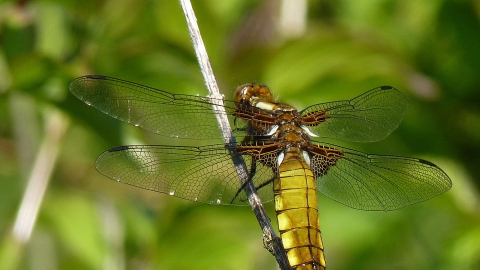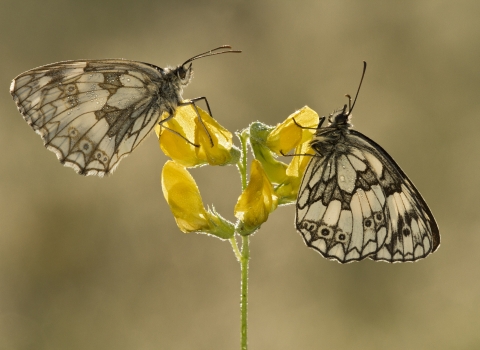
Perry Mead
Know before you go
Dogs
Visit the 'Dog walking on reserves' page in the Contact section for more information.
When to visit
Opening times
Open at all timesBest time to visit
April to JulyAbout the reserve
Perry Mead is a neutral grassland meadow on the north side of Perry Hill stretching down to the meandering River Cary near Perrys Bridge. The northern and wetter parts of the reserve close to the river are unimproved water meadows with species-rich neutral grassland flora. Mature deciduous hedgerows surround the fields and a short length of wet ditch bisects the northern field and discharges into the River Cary. One of the most imposing plants growing along the wetter ditches is the tall white Hemlock Water Dropwort, an important plant as a nectar source for many insects. Also along the ditches grows Greater Spearwort and Wavy Bittercress.
In the damper meadows and early in the year Ladys Smock and is often the most dominant plant, and then later Yellow Rattle is also prolific. The southern higher and much drier parts of the reserve have far fewer flowers. The River Cary and wet ditches provide some good habitat for dragon and damselflies. The Broad Bodied Chaser, Large Red Damselfly, Banded Damselfly, Azure Damselfly and the Common Blue Damselfly have all been recorded. These meadows are also good for butterflies in summer. One of the most striking is the brilliant Small Copper. You will also find Common Blue, Large Skipper, Speckled Wood, Gatekeeper, Meadow Brown and Marbled White. Roe deer are seen regularly here. Don’t forget that parts of the reserve are cut for hay mid summer.
Wildflower seed harvested at Somerset Wildlife Trust's Babcary Meadows has been sown at Perry Mead to increase flower diversity on the parts of the reserve where past agricultural activity has reduced wild flower numbers.
Somerset Wildlife Trust are creating more habitats for bees, hoverflies and butterflies at Perry Mead by harvesting seed from the flower-rich fields at Somerset Wildlife Trust's Babcary Meadow Nature Reserve. This seed has then been sown into a species-poor field at Perry Mead. Careful preparation of the ground and suitable aftercare should ensure that the introduced flower seed germinates and transforms the field at Perry Mead from mainly grass to a diverse mix of flowering plants and grasses; perfect food for Somerset's bees and other pollinators to enjoy.


